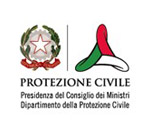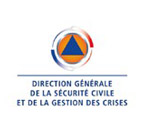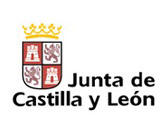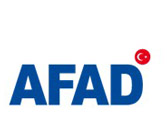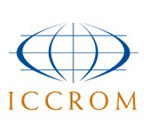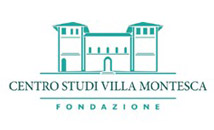A shared tool for an effective resilience of disaster-prone cultural heritage
Now also available in French!
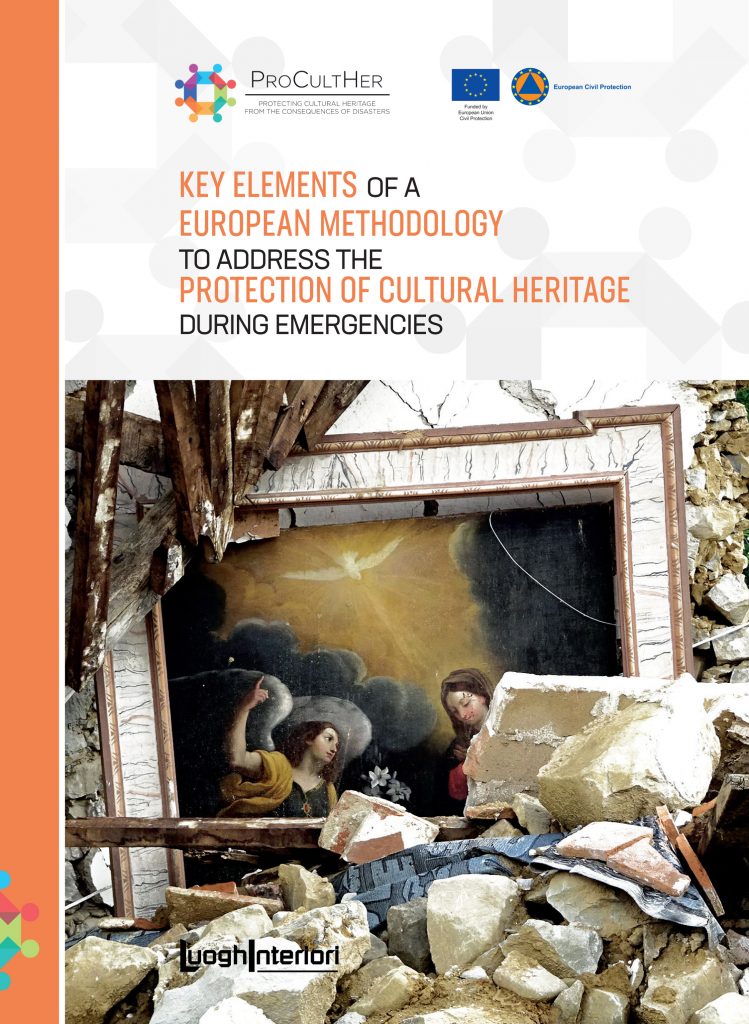
Recognizing that the urgency of taking adequate measures towards the preservation and protection of cultural heritage from natural and man-made hazards has considerably increased due to the growing effects of climate change, rapid urbanization and more recently the impact of COVID-19 pandemic, from 2019 to 2021, PROCULTHER has advocated for a paradigm shift on the importance of including cultural heritage protection in the disaster risk management process through the definition of common technical and operational languages, tools, standard operating procedures at national and European level with the overall purpose of strengthening technical and operational capacities through the Union Civil Protection Mechanism – UCPM. All this has been consolidated through the elaboration of the document: “Key Elements of a European Methodology to Address the Protection of Cultural Heritage during Emergencies”. This Methodology, built on lessons learnt and best practices of the project Consortium Partners, provides for a set of elements to advance preparedness and response activities with the purpose of including cultural heritage safeguard in all disaster risk management processes.
The inclusive consultation process that brought to the drafting of the Methodology started with the establishment of national working groups in each partner country, involving all public and private stakeholders in charge of the safeguard of cultural heritage in emergency management, with the scope of collecting, in a participatory and comparable way, all the resources and practices that the project partners are ready to deploy in case of an emergency abroad to protect cultural heritage at risk of disaster.
In December 2019, the main findings emerging from this joint consultation were shared at international level with experts coming from Civil Protection Authorities and Ministries of Culture of the PROCULTHER Partner countries, UNESCO-Regional Bureau for Science and Culture in Europe, ICCROM and Villa Montesca, who were called to identify the weak points to be strengthen by each project partner to improve national capacities in the field of Cultural Heritage protection so as to define the key elements for the elaboration of the Methodology.
Successively, the Partners’ advocacy actions – mainly addressed to EU Member States and UCPM Participating States – went beyond the borders expected thanks to the implementation, in June 2021, of the virtual international workshop “Defining European Technical and Operational Capacities for the Protection of Cultural Heritage at Risk of Disaster”. This event allowed togain a perspective on the activities undertaken by extra-project stakeholders on the protection of cultural heritage at risk of disaster, and gather more elements for the revision of the document with the nearly 100 experts from over 30 countries (including 18 EU Member States (1) and 4 UCPM Participating States, Argentina, the Caribbean region, Israel, Mexico, Palestine, the United Kingdom, and the United States of America), and the 16 speakers from civil protection authorities, ministries, governmental and research institutions including the European Commission Directorates DG ECHO, DG EAC and international organisations, such as UNESCO and ICCROM that attended this workshop.
In this sense, the Methodology, relying on a common and shared understanding of the subject at European level, aims at providing key operational and technical elements to address cultural heritage at risk of disaster, offering an overview of the main actions that should be taken into particular account to advance preparedness and response activities for the inclusion of cultural heritage safeguard in disaster risk management processes at both national and European level. Many structural, technical and operational aspects on how to enhance the protection of cultural heritage at risk of disaster at each territorial level have been explored in order to produce a document which concisely points out the elements that are crucial in disaster risk management operations: from the existing institutional framework to the inclusion of cultural heritage in planning processes, from the needed coordination structure and supporting team to the tools and data management system in support of the experts deployed on the field, as well as training sessions and exercises focused on the protection of cultural heritage at risk. In order to provide for specific references and further analysis, the document also reports ten case studies on the practices already developed by the PROCULTHER partners in terms of institutional framework, planning, coordinated structure and teams. Finally, it concludes the actions to be undertaken to achieve an effective protection of cultural heritage at risk of disaster.
It is worth mentioning that the contents of the Methodology were also tested through the implementation of the Virtual International Training Module on the Protection of Tangible and Intangible Cultural Heritage in Emergency organized in November 2021. Actually, the purpose of this event was twofold: it allowed to test the module following the training programme proposed by the Methodology, and to provide PROCULTHER Partners and stakeholders with the opportunity for its further improvement and deeper analysis, thanks to the feedback and insights by about 40 disaster risk management and cultural heritage experts, coming from 15 different UCPM Member and Participating States, that took part in the training and discussion-based exercise dealing with cultural heritage protection that closed the event.
The elaboration of the “Key Elements of a European Methodology to Address the Protection of Cultural Heritage during Emergencies” has paved the way for a new era for the enhancement of the European capacities for protecting cultural heritage at risk of disaster. With the closure of PROCULTHER, the project Partners’ job is not finished; until 2023, PROCULTHER-NET will consolidate its technical and operational approach, allowing the transition from theory to practice and ensuring adequate learning processes through the creation of a dedicated thematic community within the European Union Civil Protection Knowledge Network- KN. Consequently, the Methodology, precisely because of the approach adopted by those who drafted it and as a result of the inclusive process of confrontation through which it was drawn up, is intended as a living working tool, tested in the field and adapted to contingencies, and finally enhanced by the contributions from disaster risk managers and cultural heritage protection experts eager to join and consolidate the PROCULTHER-NET Community established within the KN.
Download the Key Elements of a European Methodology to Address the Protection of Cultural Heritage during Emergencies
Téléchargez Les éléments clés d’une méthodologie européenne pour la protection du patrimoine culturel en cas d’urgence en français!
Find out more about PROCULTHER-NET – Visit our webpage in the Union Civil Protection Knowledge Network
(1) In the workshop intervened the following European Member States/UCPM participating States: Belgium, Bulgaria, Croatia, Estonia, France, Germany, Greece, Hungary, Ireland, Italy, Latvia, Luxembourg, Malta, Poland, Portugal, Romania, Slovenia, Spain, Turkey, Montenegro, Norway and Serbia

